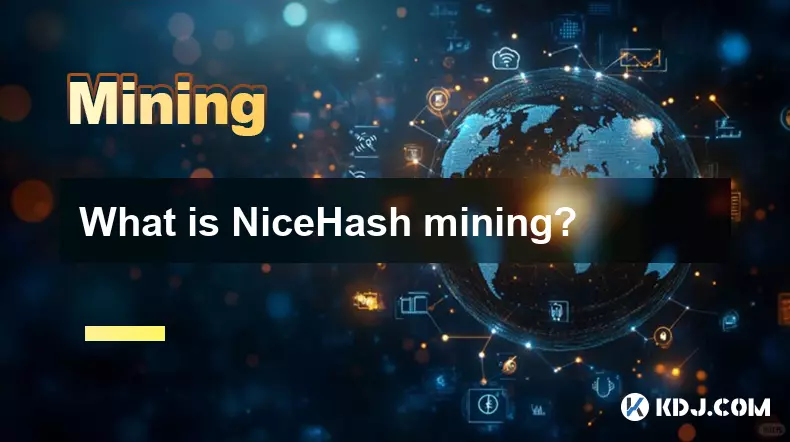-
 bitcoin
bitcoin $100977.009184 USD
-2.05% -
 ethereum
ethereum $3282.009150 USD
-3.23% -
 tether
tether $0.999813 USD
-0.02% -
 xrp
xrp $2.208254 USD
-4.89% -
 bnb
bnb $951.411089 USD
0.55% -
 solana
solana $155.761205 USD
-2.84% -
 usd-coin
usd-coin $1.000217 USD
0.02% -
 tron
tron $0.284475 USD
-1.28% -
 dogecoin
dogecoin $0.162363 USD
-1.53% -
 cardano
cardano $0.533988 USD
-0.47% -
 hyperliquid
hyperliquid $39.174339 USD
-3.22% -
 chainlink
chainlink $14.724828 USD
-1.16% -
 bitcoin-cash
bitcoin-cash $477.297986 USD
-1.28% -
 zcash
zcash $554.227426 USD
17.30% -
 ethena-usde
ethena-usde $0.998995 USD
-0.03%
How much does it cost to start mining Bitcoin?
The initial cost of Bitcoin mining equipment ranges from $2,000 to $5,000 for new ASICs, with additional expenses for electricity, cooling, and pool fees impacting profitability.
Nov 05, 2025 at 05:49 pm

Initial Investment in Bitcoin Mining Equipment
1. The most significant cost when starting Bitcoin mining is purchasing the necessary hardware. High-performance ASIC miners such as the Bitmain Antminer S19 Pro or the MicroBT WhatsMiner M30S are commonly used. These machines typically range from $2,000 to $5,000 depending on model and availability.
2. Used mining rigs may be available at lower prices, sometimes under $1,000, but they often come with higher power consumption and reduced efficiency. Buyers must weigh upfront savings against long-term operational costs.
3. Shipping fees, import taxes, and customs duties can add hundreds of dollars to the total equipment cost, especially for international orders. Delivery times may also affect profitability due to fluctuating network difficulty and Bitcoin price movements.
4. Some miners opt to buy pre-built mining containers or join mining farms that offer hosted solutions. These services include equipment setup and maintenance but come at a premium, often increasing initial investment by 20% to 40%.
Electricity and Operational Expenses
1. Electricity is the largest recurring expense in Bitcoin mining. Miners consume substantial power—devices like the Antminer S19 use around 3,250 watts. Rates vary globally; locations with cheap electricity, such as parts of China, Iran, or Kazakhstan, attract large-scale operations.
2. In regions where electricity costs $0.10 per kWh, running a single S19 for a month can cost over $230. At $0.15/kWh, that exceeds $340 monthly. Profitability hinges on maintaining low energy costs relative to Bitcoin’s market value.
Energy-efficient setups combined with access to subsidized or renewable power sources dramatically improve long-term sustainability.3. Cooling systems are essential, particularly in warmer climates. Additional fans, ventilation, or air conditioning increase power draw and must be factored into operating budgets.
4. Internet connectivity and minimal downtime are crucial. While internet costs are relatively small, unstable connections can lead to missed block rewards, reducing overall returns.
Mining Pools and Associated Fees
1. Solo mining is rarely profitable for individuals due to high network difficulty. Most miners join pools to combine hashing power and receive consistent payouts. Popular pools include F2Pool, Slush Pool, and Poolin.
2. Mining pools charge service fees, usually between 1% and 3% of earned rewards. These reduce net income but provide predictable revenue streams compared to the volatility of solo mining.
3. Pool selection affects payout structure. Some use proportional systems, others pay based on recent shares (PPLNS). Understanding each model helps miners optimize returns based on their uptime and contribution levels.
Choosing a reliable pool with transparent fee structures and low latency improves consistency in earnings.4. Network congestion or pool outages can delay reward distribution. Miners should consider redundancy options and monitor pool performance metrics regularly.
Hidden and Maintenance Costs
1. Hardware degradation occurs over time due to constant operation. ASICs typically last 2 to 3 years under optimal conditions. Dust accumulation, overheating, or voltage fluctuations can shorten lifespan significantly.
2. Repairs and replacement parts add unexpected expenses. Some manufacturers offer warranties, but shipping units back for servicing may not be cost-effective internationally.
3. Noise pollution from cooling fans necessitates soundproofing in residential areas, adding construction or material costs. This is often overlooked during initial planning.
4. Software updates, firmware patches, and security measures require ongoing attention. Outdated firmware can result in reduced efficiency or vulnerability to malicious attacks.
Frequently Asked Questions
What is the cheapest way to start Bitcoin mining?Beginners can start with second-hand ASIC miners priced under $1,000, though efficiency will be lower. Pairing such devices with low-cost electricity and joining a reputable mining pool reduces barriers to entry.
Can I mine Bitcoin using a regular computer?Modern Bitcoin mining requires specialized ASIC hardware. CPUs and GPUs are no longer viable due to vastly inferior hash rates and excessive power consumption relative to output.
How do I calculate if mining is profitable?Use online calculators that factor in your miner’s hash rate, power consumption, local electricity cost, pool fees, and current Bitcoin price. Regularly reassess as these variables change.
Are there legal restrictions on Bitcoin mining?Yes. Countries like China have banned mining operations, while others impose strict regulations or require business licenses. Always verify local laws before investing in infrastructure.
Disclaimer:info@kdj.com
The information provided is not trading advice. kdj.com does not assume any responsibility for any investments made based on the information provided in this article. Cryptocurrencies are highly volatile and it is highly recommended that you invest with caution after thorough research!
If you believe that the content used on this website infringes your copyright, please contact us immediately (info@kdj.com) and we will delete it promptly.
- BlockDAG, Avalanche, Dogecoin: Crypto's Leading Trio in 2025
- 2025-11-07 22:05:01
- Layer 2 Coins: Will There Be a Potential Explosion by 2026?
- 2025-11-07 16:50:02
- Filecoin, ICP, and the AI Infrastructure Renaissance: Is History Repeating?
- 2025-11-07 16:50:02
- Bitcoin's Wild Ride: Surges, Zeros, and the Search for Stability
- 2025-11-07 17:05:01
- XRP, Bitcoin, and the Rally: What's the Deal, New York?
- 2025-11-07 17:25:01
- Filecoin, DePIN, and a Technical Breakout: What's the Buzz?
- 2025-11-07 17:05:01
Related knowledge

What is the block reward in mining?
Nov 06,2025 at 12:35am
Understanding Block Rewards in Cryptocurrency Mining1. The block reward is the incentive miners receive for successfully validating and adding a new b...

How do mining algorithms work?
Nov 06,2025 at 04:59am
Mining Algorithms and Their Role in Blockchain Networks1. Mining algorithms serve as the backbone of blockchain consensus mechanisms, ensuring that tr...

What is NiceHash mining?
Nov 06,2025 at 07:40am
NiceHash mining refers to the process of renting out computational power to individuals or organizations seeking to mine cryptocurrencies without owni...

Does an antivirus program affect mining?
Nov 05,2025 at 09:29pm
Understanding Decentralized Exchanges in the Crypto Ecosystem1. Decentralized exchanges (DEXs) operate without a central authority, allowing users to ...

What is the history of Bitcoin mining?
Nov 05,2025 at 08:15pm
Within the fast-moving world of cryptocurrency, new developments emerge daily, reshaping how investors, developers, and institutions interact with dig...

How is the energy consumption of mining justified?
Nov 05,2025 at 10:20pm
Energy Consumption in Cryptocurrency Mining1. The energy consumption associated with cryptocurrency mining has drawn significant attention from enviro...

What is the block reward in mining?
Nov 06,2025 at 12:35am
Understanding Block Rewards in Cryptocurrency Mining1. The block reward is the incentive miners receive for successfully validating and adding a new b...

How do mining algorithms work?
Nov 06,2025 at 04:59am
Mining Algorithms and Their Role in Blockchain Networks1. Mining algorithms serve as the backbone of blockchain consensus mechanisms, ensuring that tr...

What is NiceHash mining?
Nov 06,2025 at 07:40am
NiceHash mining refers to the process of renting out computational power to individuals or organizations seeking to mine cryptocurrencies without owni...

Does an antivirus program affect mining?
Nov 05,2025 at 09:29pm
Understanding Decentralized Exchanges in the Crypto Ecosystem1. Decentralized exchanges (DEXs) operate without a central authority, allowing users to ...

What is the history of Bitcoin mining?
Nov 05,2025 at 08:15pm
Within the fast-moving world of cryptocurrency, new developments emerge daily, reshaping how investors, developers, and institutions interact with dig...

How is the energy consumption of mining justified?
Nov 05,2025 at 10:20pm
Energy Consumption in Cryptocurrency Mining1. The energy consumption associated with cryptocurrency mining has drawn significant attention from enviro...
See all articles





















![The Graph Price Prediction [GRT Crypto Price News Today] The Graph Price Prediction [GRT Crypto Price News Today]](/uploads/2025/11/07/cryptocurrencies-news/videos/690d4df44fe69_image_500_375.webp)




















































